Foreign Buyers I: Loading Up on US Treasuries & Equities. The phrase “I have always depended on the kindness of strangers” is a famous line from Tennessee Williams’ play,
A Streetcar Named Desire. It’s spoken by the character Blanche DuBois in the final scene as a doctor and a nurse are leading her away. The line is often interpreted in various ways, including as an expression of Blanche’s naivety, her reliance on fantasy and illusion, and her desperate need for acceptance and validation.
Similarly, Uncle Sam has increasingly relied on the kindness of strangers, i.e., foreign investors, to purchase US Treasuries, helping to finance the rapidly mounting debt of the US federal government. In recent years, Doomsayers, such as Ray Dalio, have warned that we can no longer count on them to do so. A debt crisis is increasingly likely, they warn.
That would cause bond yields to soar in the US. The would also plummet in this scenario. The dollar bears have recently warned that global equity investors are rebalancing their portfolios out of US equities and into other major equity markets worldwide, particularly those in Europe. This has depressed the foreign exchange value of the dollar, especially relative to the euro.
The naysayers may be right eventually, but the May Treasury International Capital System (TICS) data released last Thursday by the US Treasury show that foreigners remain very kindly disposed to buying US securities. In fact, they bought these securities at a record pace over the 12 months through May! This helps to explain why the bond yield has remained relatively subdued all year, around our target range of 4.25% to 4.75% (Fig. 1 below).
That’s consistent with our view that the bond yield has normalized over the past couple of years by trading in a range like the one in the years before the Great Financial Crisis.
The record inflow into US equities also partially explains the unprecedented 26.4% rebound in the since its April 8 correction low (Fig. 2 below). Harder to explain is the weakness in the (DXY) so far this year in the face of the massive net foreign inflows into US securities (Fig. 3).
The latest Treasury data confirm our stance that this year’s decline in the dollar is a correction (that might be over), and not the beginning of a long-term decline in the foreign exchange value of the greenback.
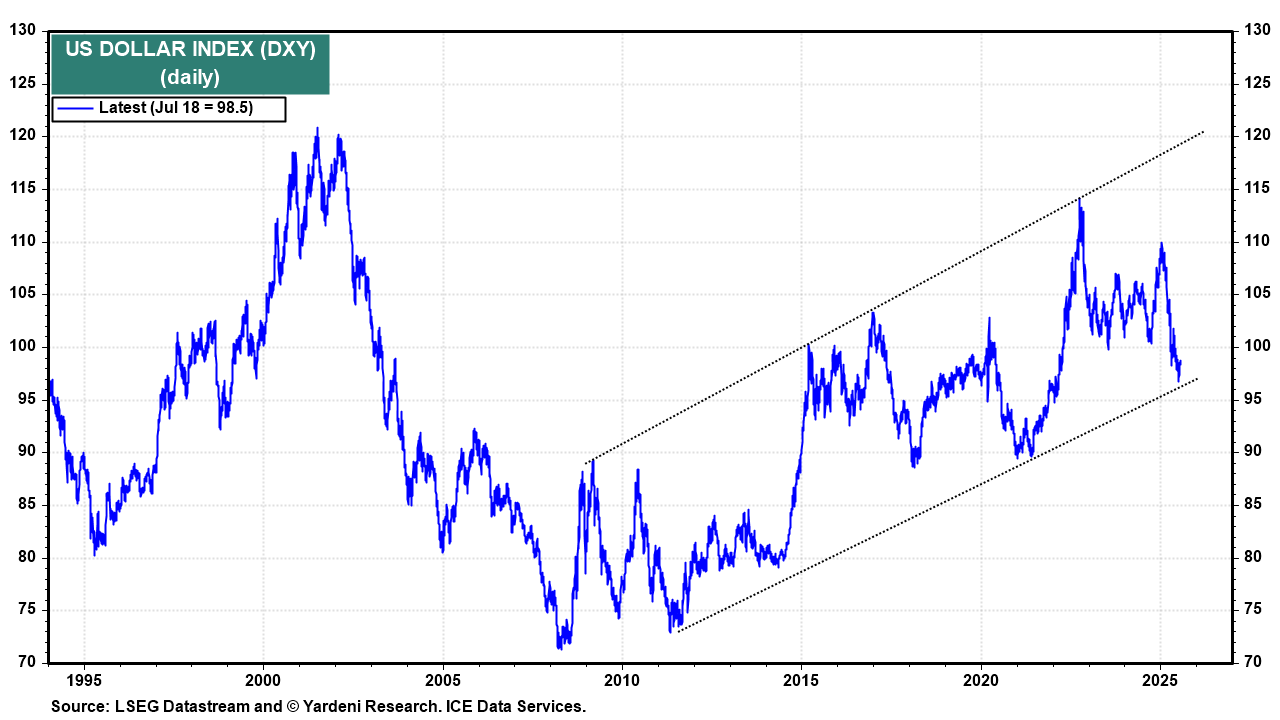
So, we take comfort from the data that confirm that it is the bears on the outlook for a massive selloff in US bonds, US equities, and the US dollar who might be delusional, not us. Our faith in the kindness of strangers has been validated by the latest Treasury data.
Now, let’s take a closer look at that data, which confirms that “foreigners like us right now, they like us” to paraphrase Sally Field’s Oscar acceptance speech:
(1) Total inflows. Total US net capital inflows, including private and official foreign accounts, rose to a record $1.76 trillion over the 12 months through May (Fig. 4 below). That’s quite impressive indeed, given that Trump’s Tariff Turmoil (TTT) was widely and mistakenly blamed for turning foreigners off to investing in the US in recent months.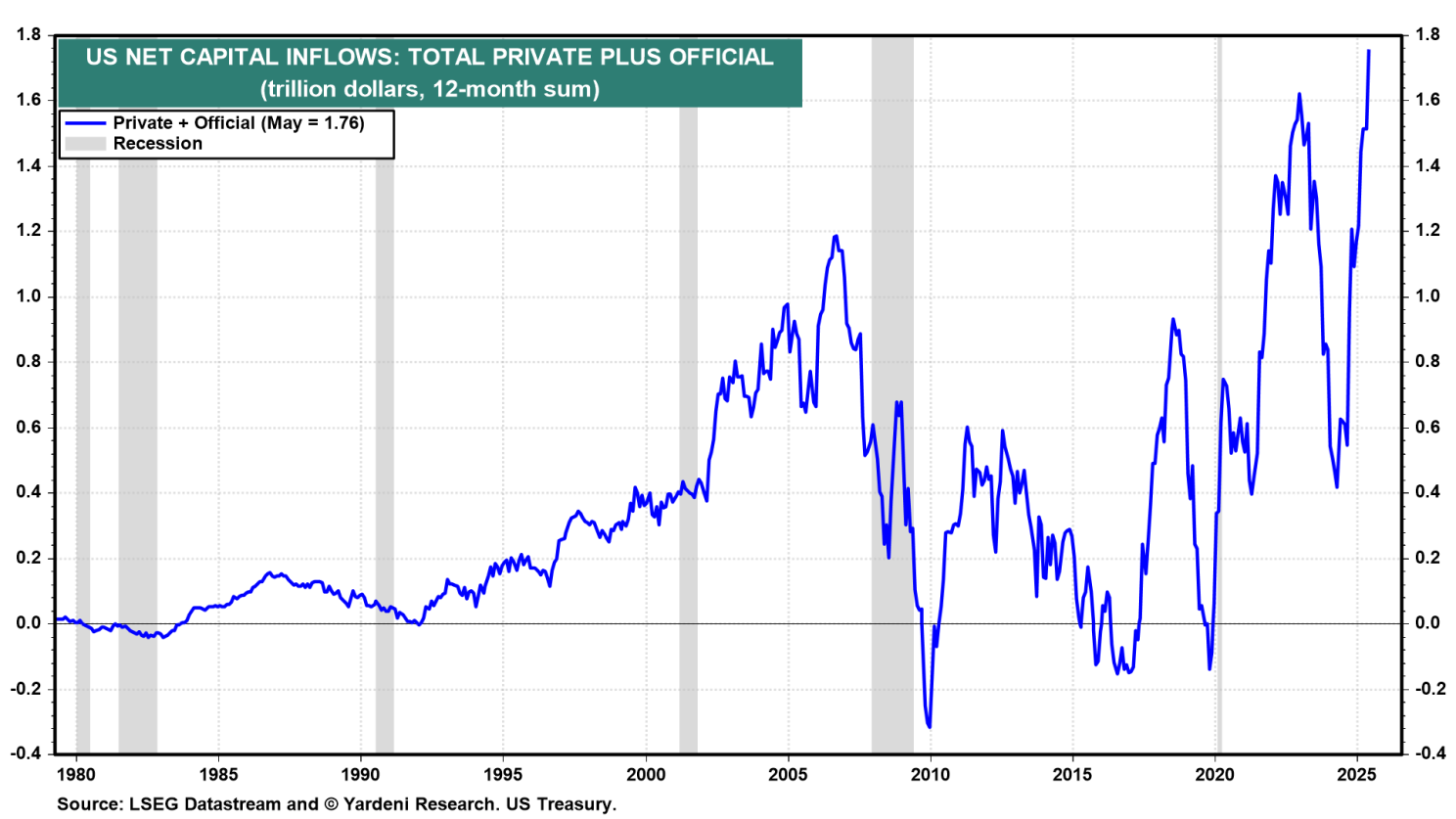
(2) Total official versus private inflows. US net capital inflows attributable to official foreign accounts were only $33.5 billion over the past 12 months through May (Fig. 5 below). But those attributable to foreign private investors soared to a record $1.73 trillion.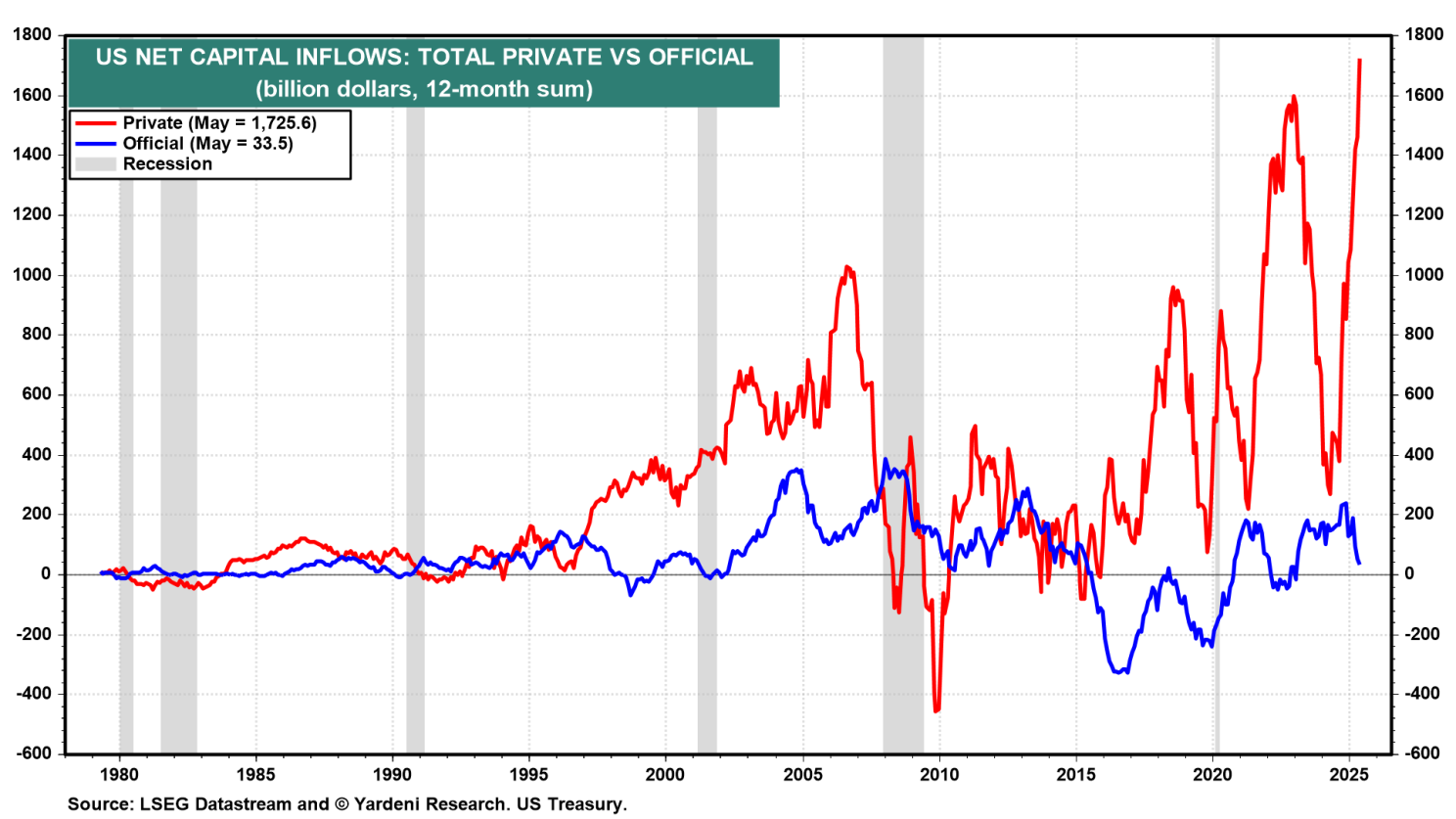
(3) Total inflows into US bonds and stocks. Net foreign inflows into US bonds (including Treasury, Agency, and corporate bonds) remained elevated at $941 billion over the past 12 months through May (Fig. 6 below). Even more impressive is that inflows into US equities surged to a record $597 billion over the same period!
During May alone, the net inflow into US securities was $318.5 billion, with $146 billion going into US Treasury notes and bonds and $114 billion going into US equities. After Trump moderated his trade war stance during April, foreign investors came back to the US in size during May.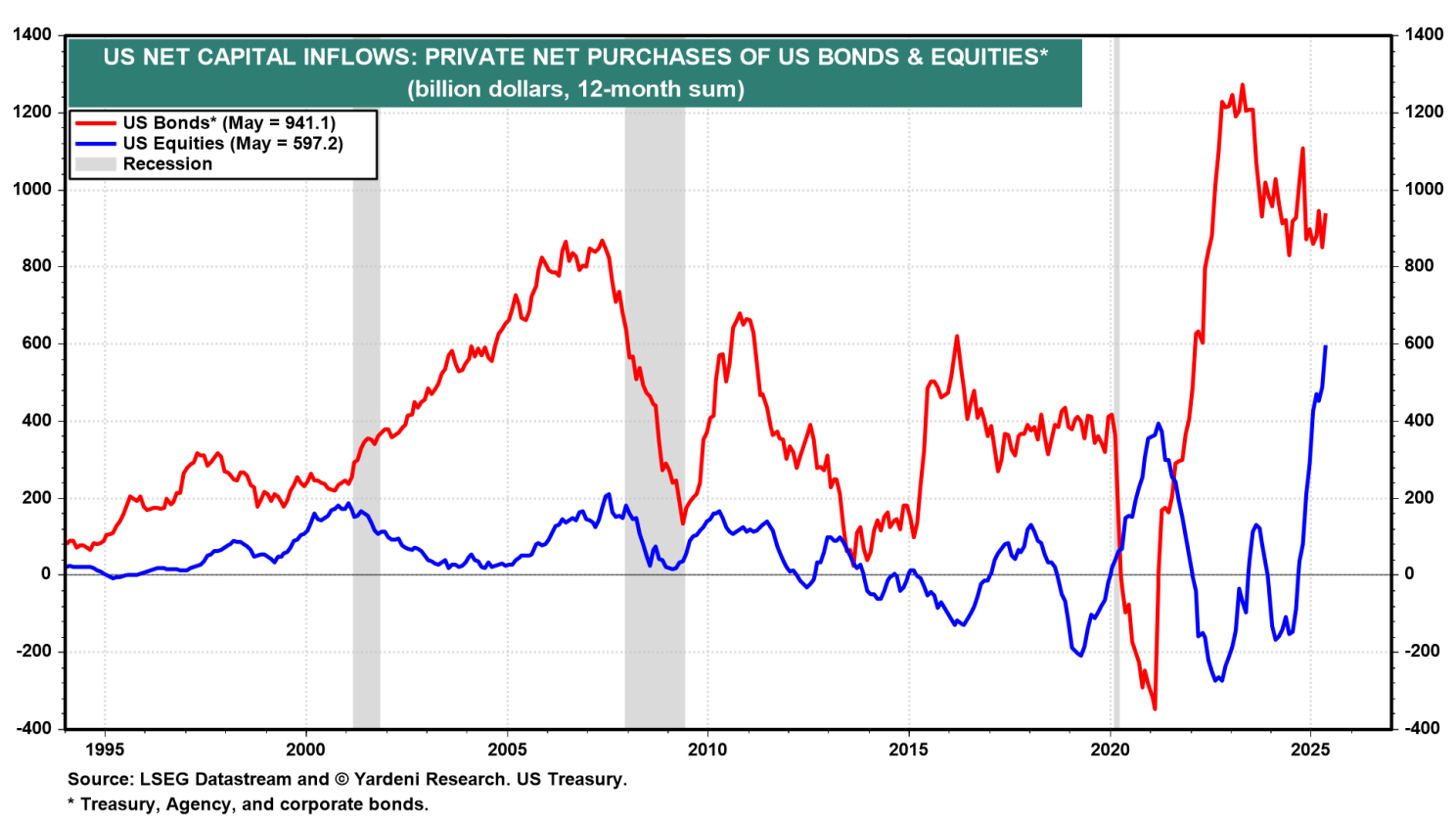
(4) Inflows into bonds. Over the past 12 months through May, net private foreign purchases of Treasury notes and bonds were $541 billion, Agency bonds were $133 billion, and domestic corporate bonds were $267 billion (Fig. 7). Official foreign accounts showed a net outflow of $73 billion over this period (Fig. 8 and Fig. 9). These accounts were also net sellers of Agency bonds ($55 billion) and equities ($35 billion).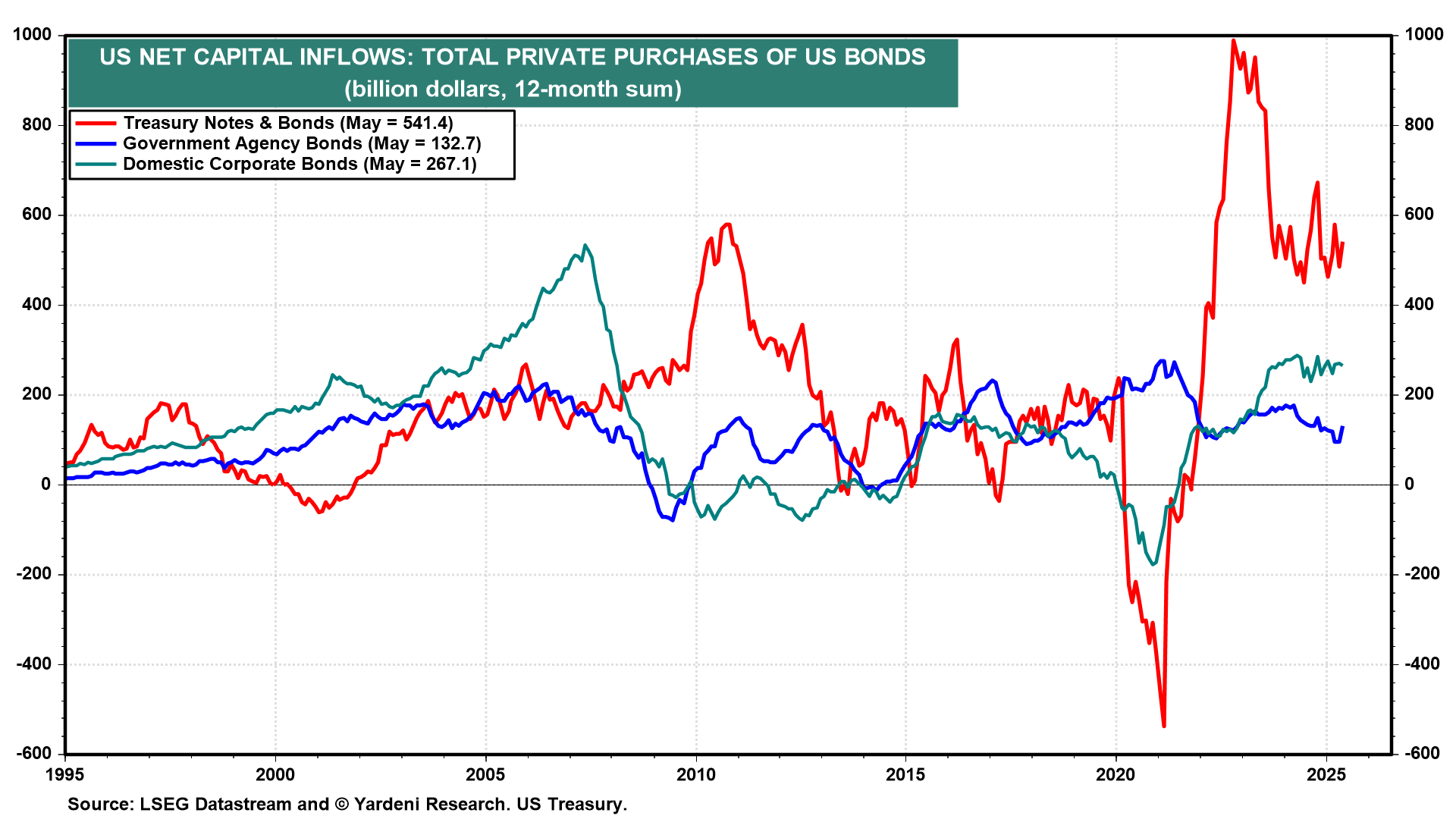
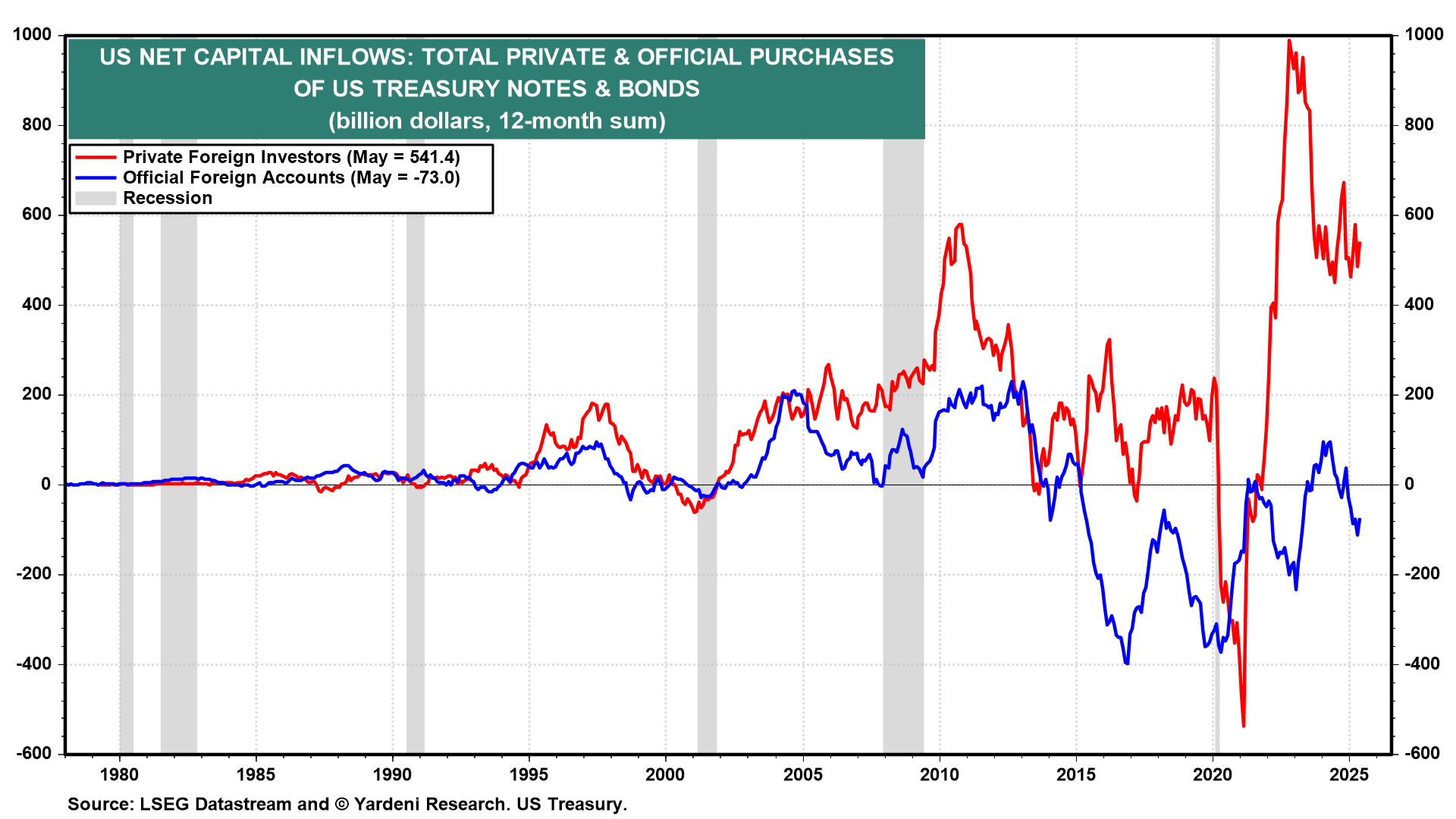
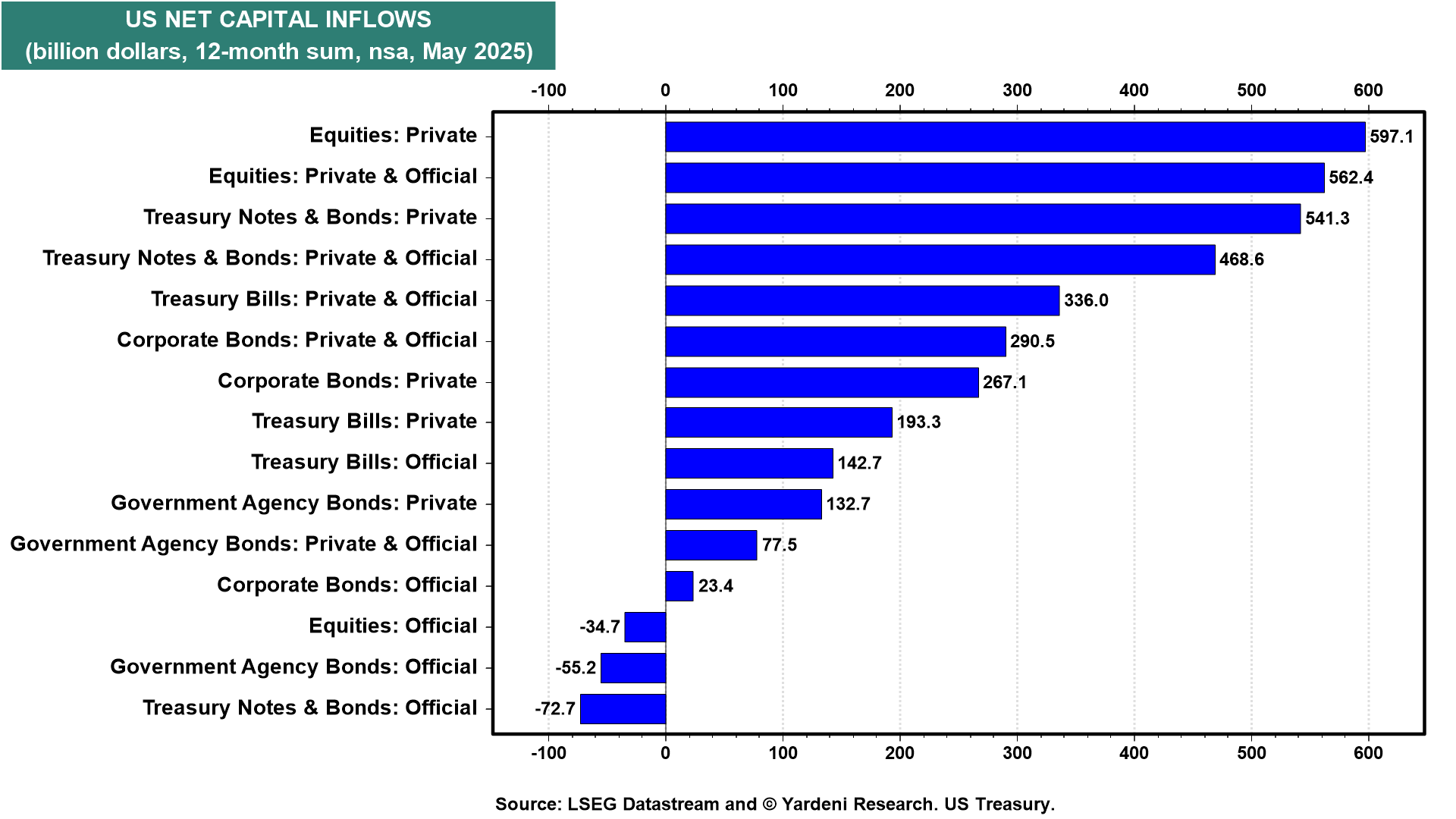
(5) Inflows into Treasury bills. Net inflows into Treasury bills over the past 12 months totaled $336 billion with official accounts purchasing $143 billion and private ones $193 billion (Fig. 10 below). The total is the most since mid-2020, just after the pandemic lockdowns were lifted suggesting that TTT caused as much angst initially around the world as did the Great Virus Crisis!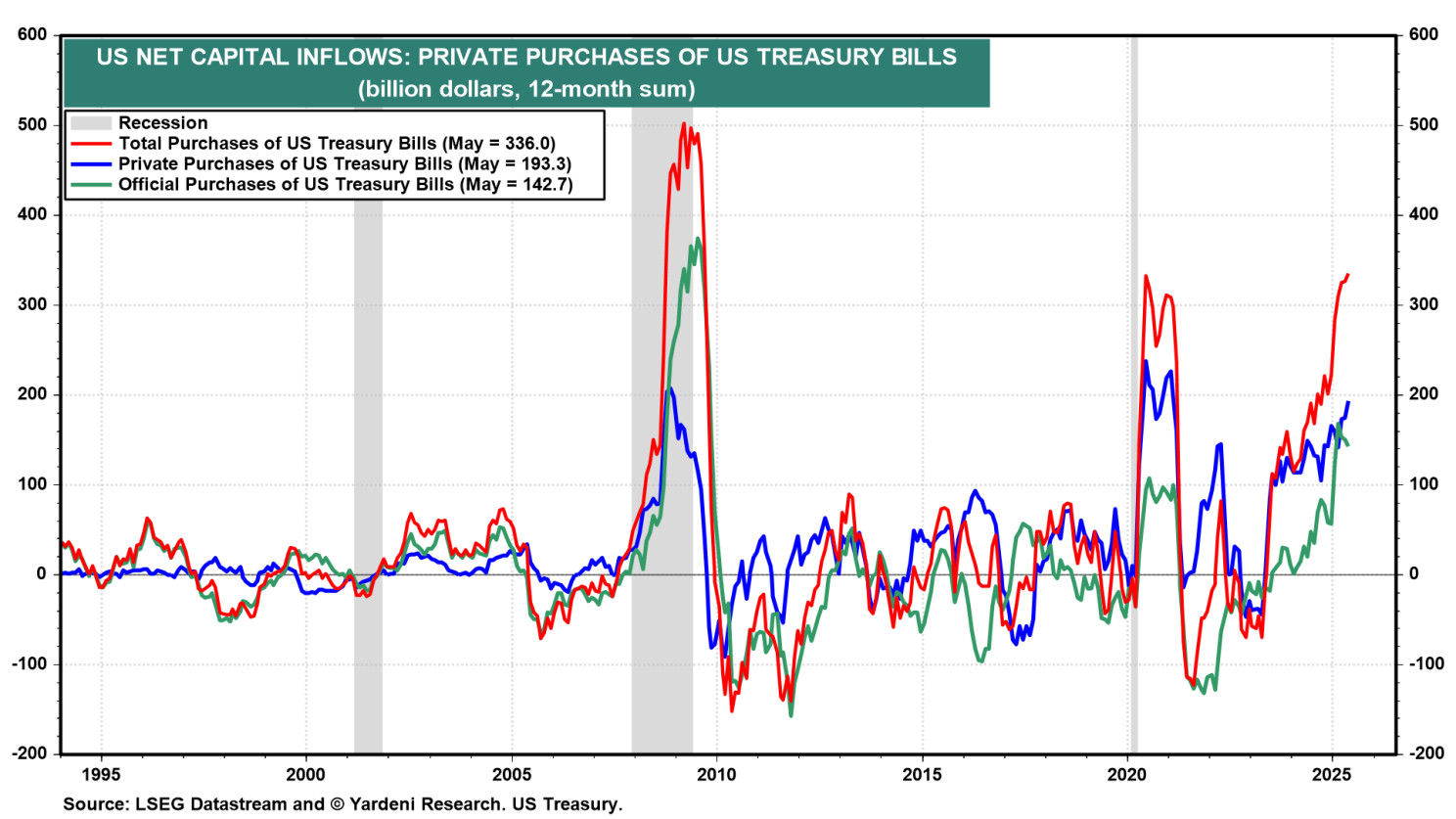
Foreign Buyers II: Not All Bond Vigilantes Speak English. The Treasury data show that the biggest group of potential bond vigilantes is foreign private investors and foreign official accounts. That’s because they own the largest share of US Treasuries. Consider the following:
(1) Foreign holdings of Treasuries. Collectively, foreigners (a.k.a., kind strangers) held a record $9.0 trillion of US Treasuries during May, up $869 billion from a year ago (Fig. 11 below). Foreign official accounts held $3.9 trillion, while private foreign accounts held $5.1 trillion.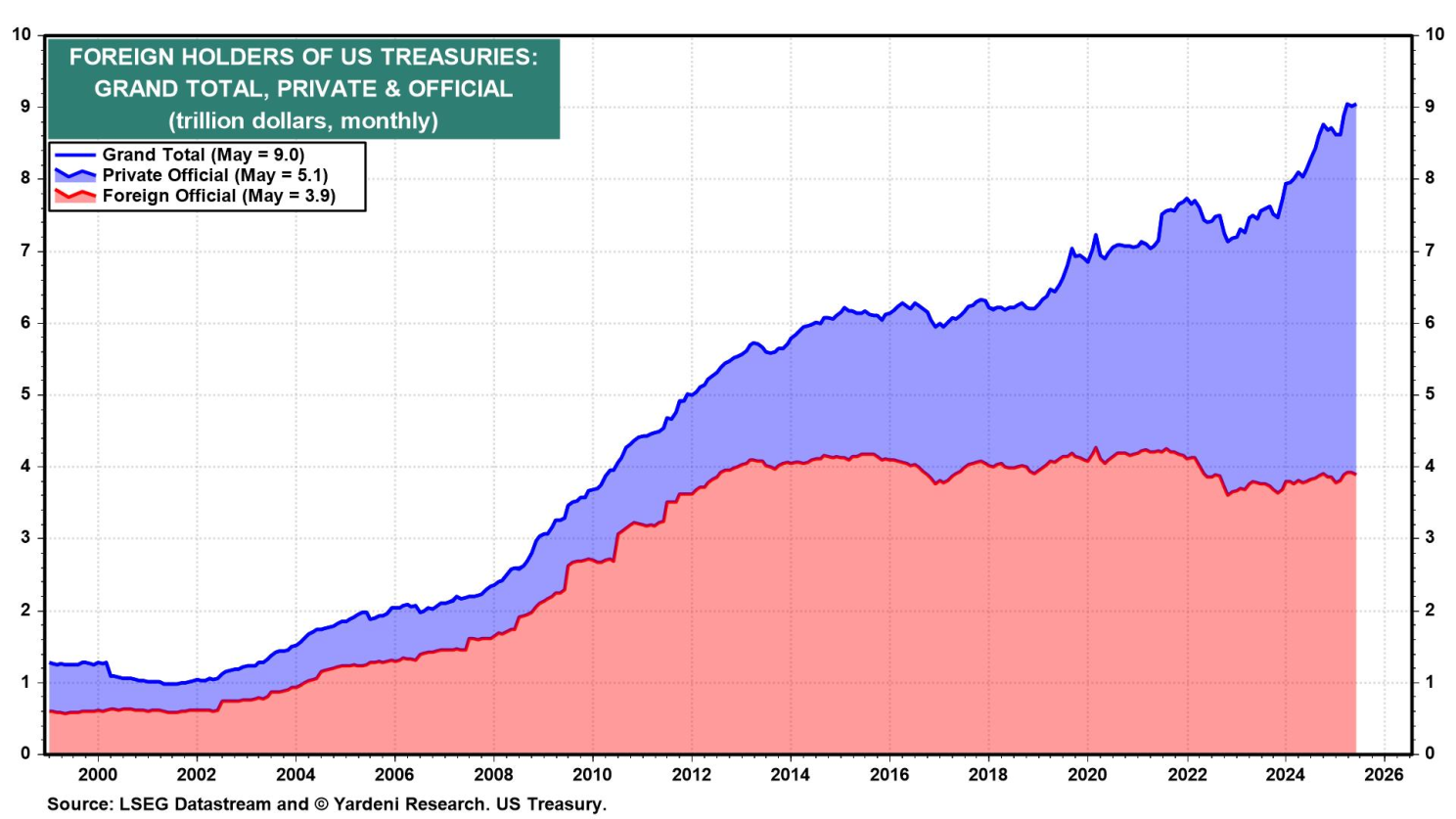
(2) Percent of US debt held by foreigners. So, foreigners held 32% of the $28.6 trillion of total outstanding US marketable Treasury debt as of May (Fig. 12 below). That’s down from a record 56% during May 2008. Over this same period, the percentage held by official accounts (including central banks and sovereign wealth funds) fell from a record 41% to 18%, while the percentage held by private foreign accounts fell from 18% to 14%. The percentage of US Treasury debt held by private foreigners exceeded that of foreign official accounts during July 2023, when they were both at 15%.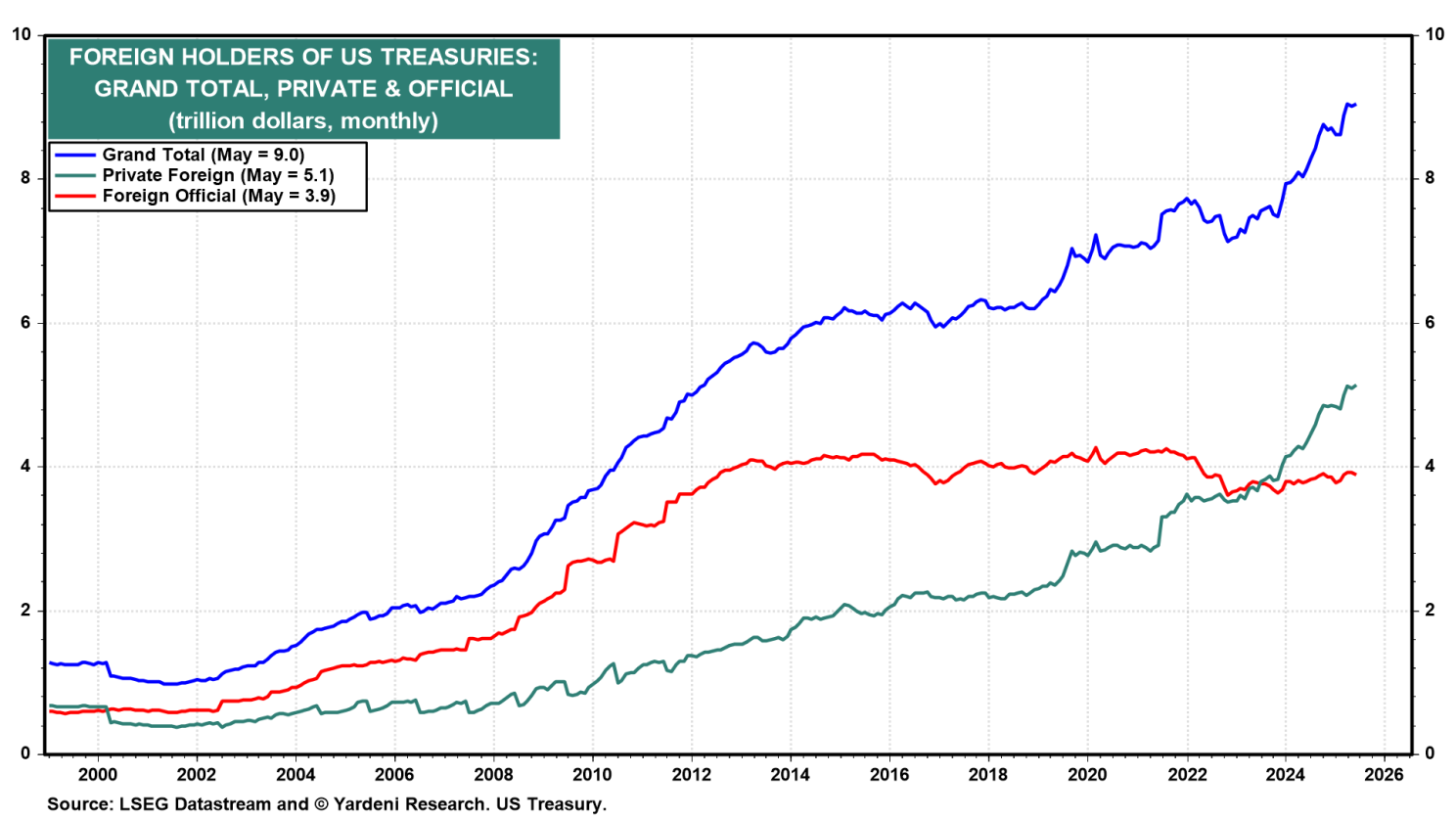
(3) Treasury maturities held by official foreigners. Interestingly, foreign official accounts hold mostly Treasury notes and bonds. During May, they held $3.5 trillion in these maturities and only $0.4 trillion in bills (Fig. 13 below). (Keep in mind that notes include all Treasuries with original maturities of 2 to 10 years and bonds are those issued with original maturities exceeding 10 years, according to the Treasury.)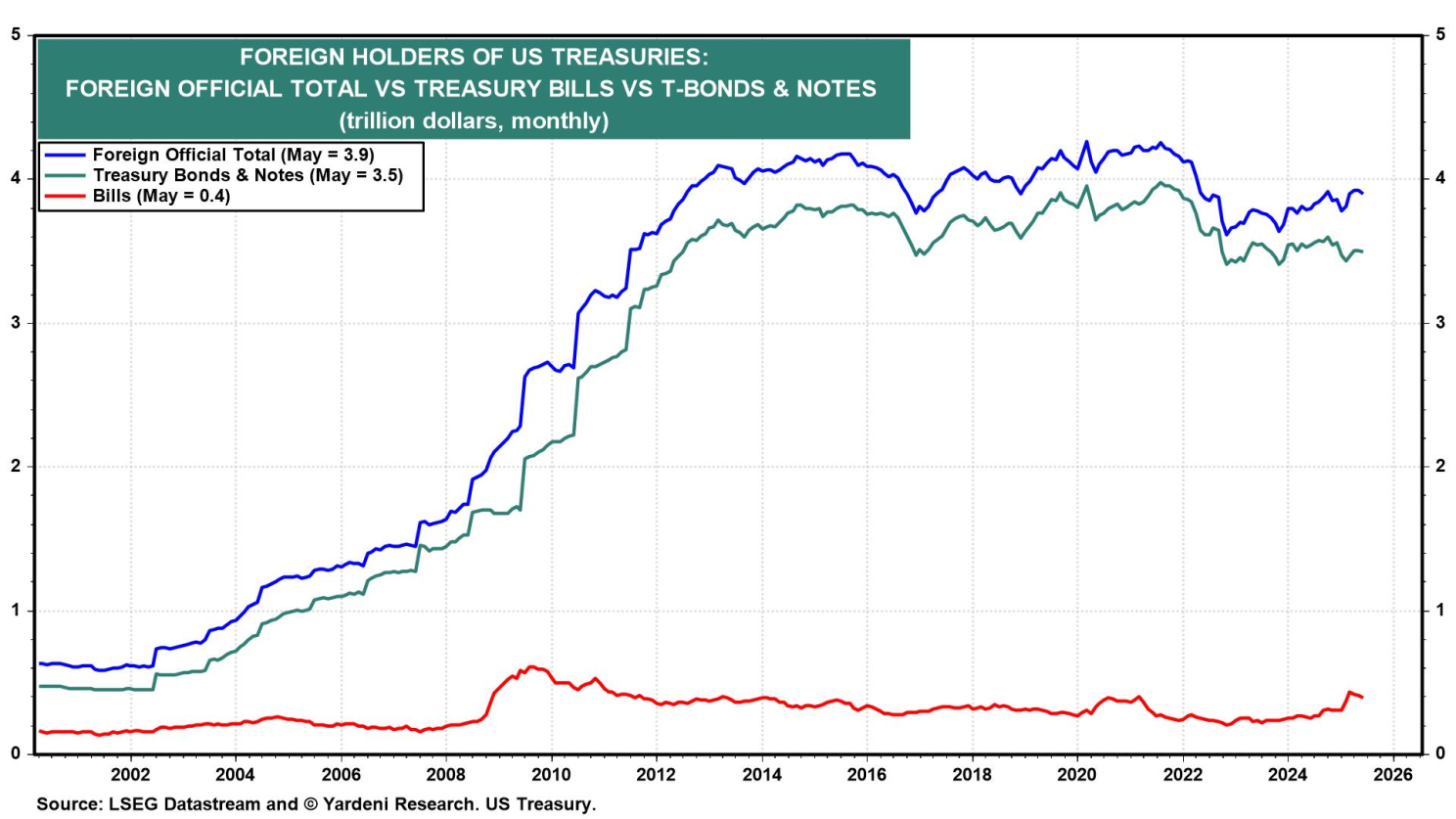
The percentage of notes and bonds held by foreign official accounts has declined from 54% during August 2008 to 18% currently (Fig. 14). Official accounts such as central banks are relatively minor characters in the bond vigilantes story.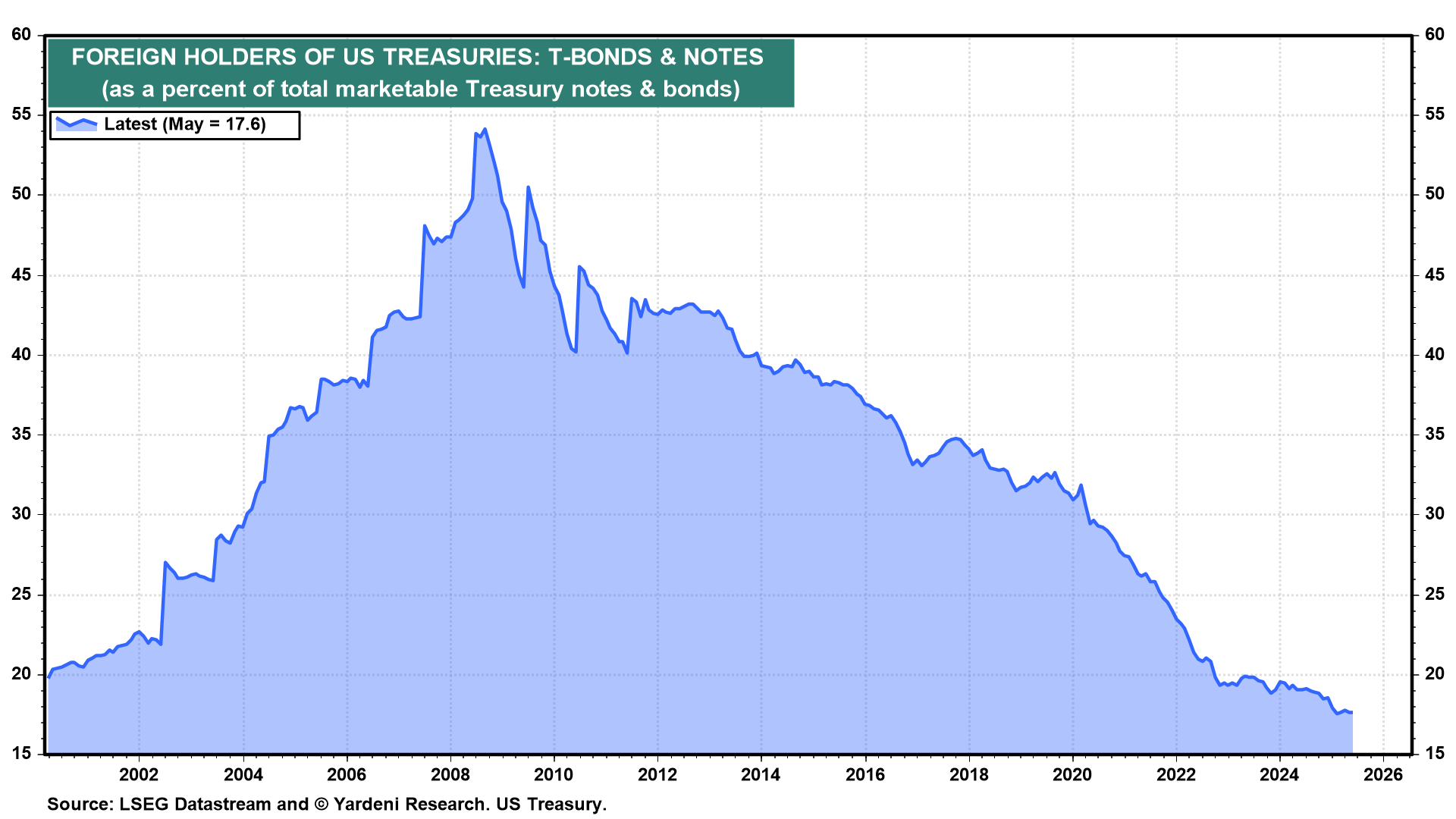
Foreign Buyers III: Fed’s Quarterly Data. The Fed uses the TICS data in its quarterly compilation of capital market transactions and balance sheets:
(1) Major holders of Treasuries during Q1-2025. At the end of Q1-2025, the “rest of the world” (ROW) held $9.0 trillion in US marketable Treasuries accounting for 32% of US marketable debt (Fig. 15 and Fig. 16). Institutional investors accounted for 14%; the Fed accounted for 14%; money market mutual funds held 10%; households owned 10%; and, US chartered depository institutions had a 5% share of the debt. All others accounted for the remaining 15%.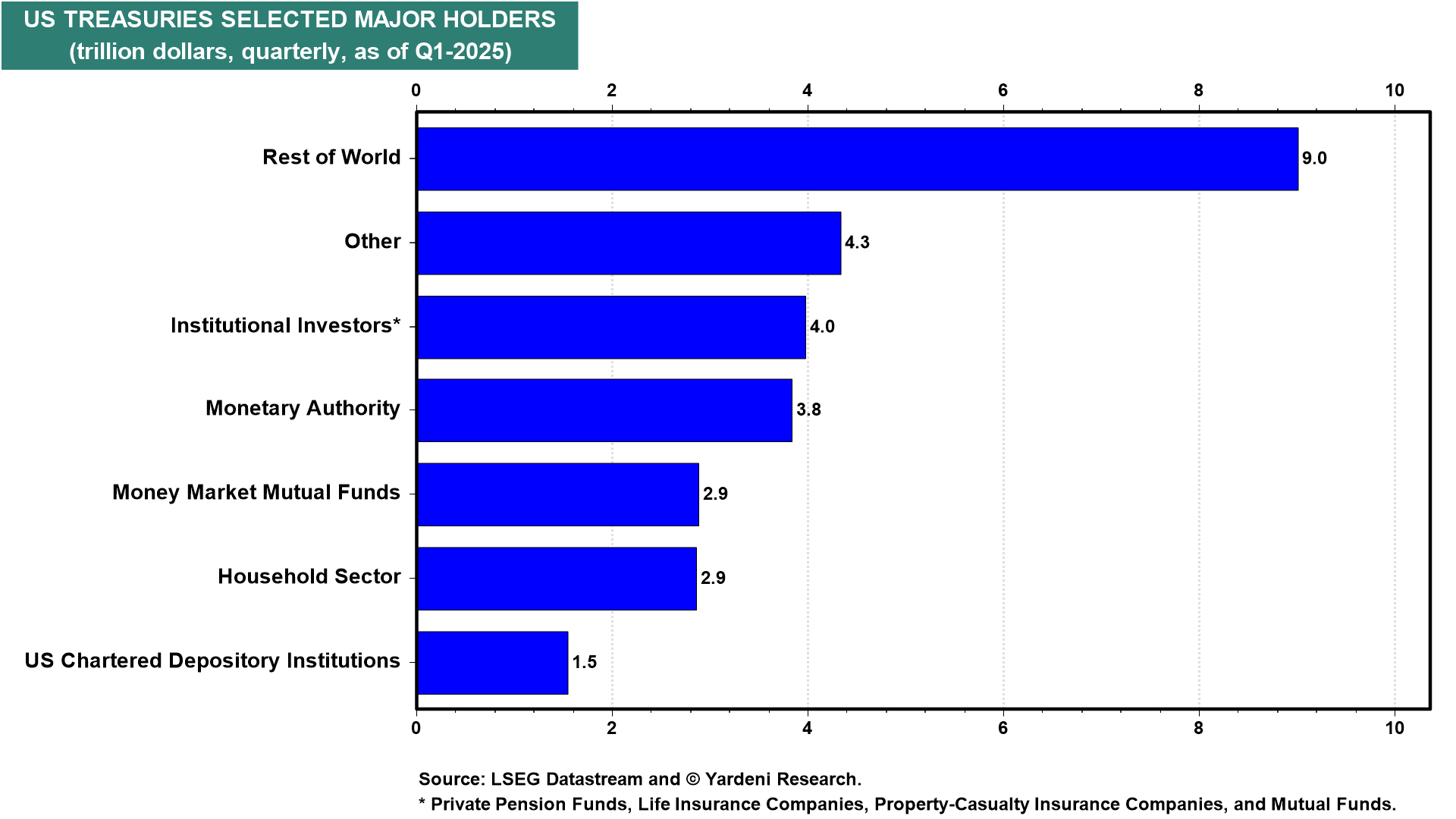
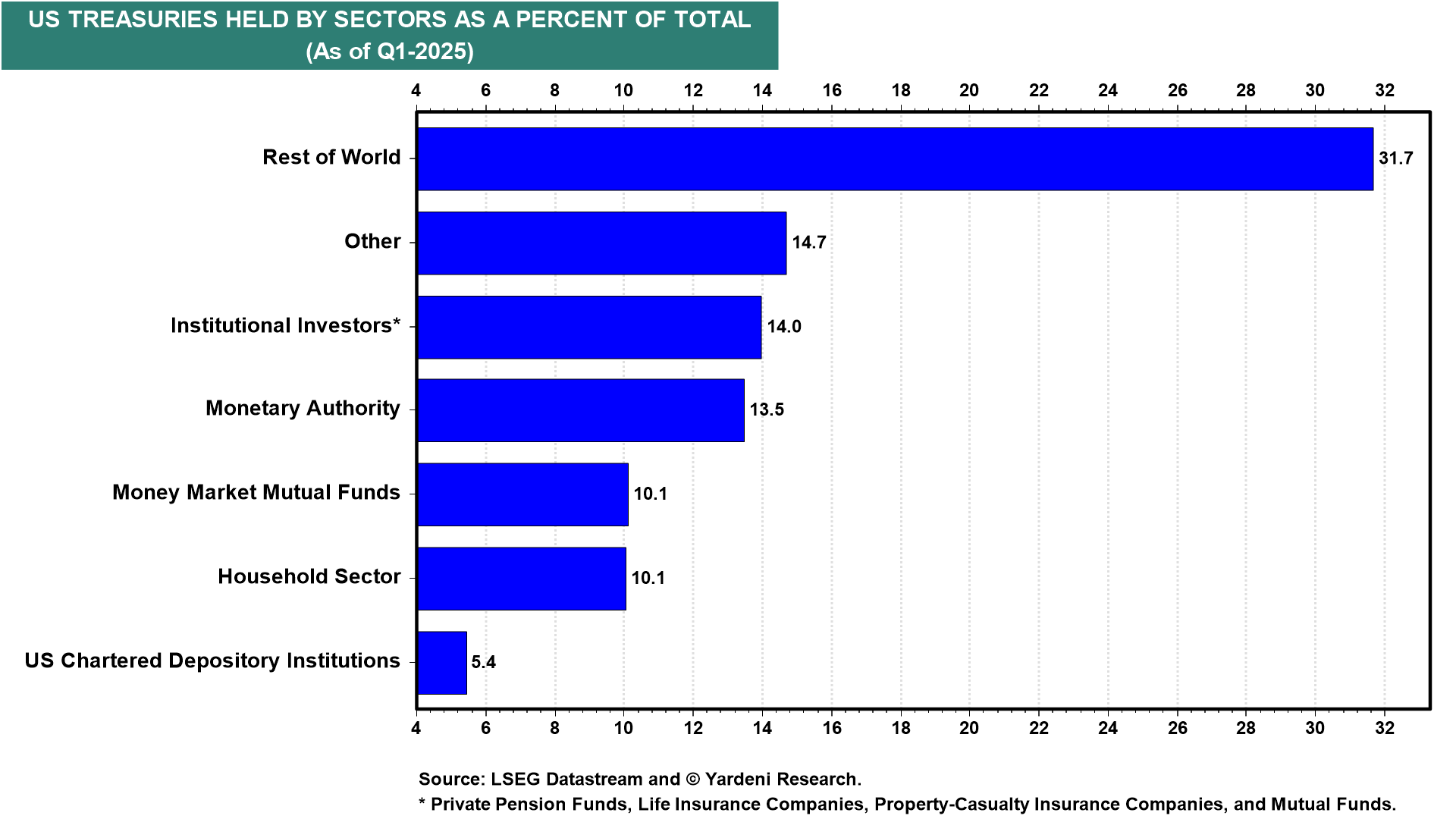
(2) Major holders of Treasuries since 1952. During the 1950s and 1960s, banks held the largest share of Treasury debt. But their share has fallen It fell from over 44% during 1952 to 6% currently (Fig. 17 below).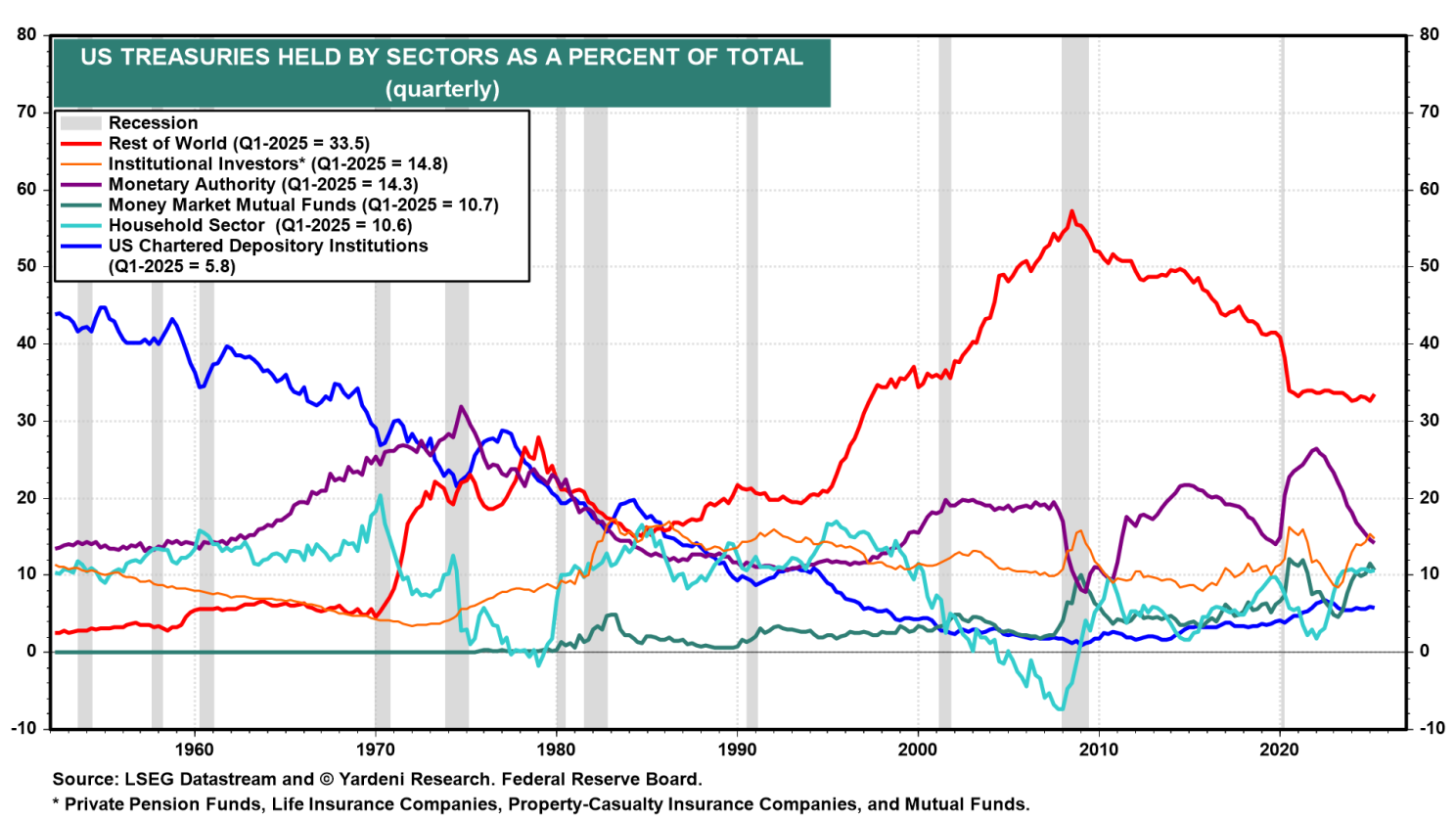
Picking up share along the way has been the ROW. It was well below 10% during the 1950s and 1960s. It shot up to 28% at the end of 1978 after President Richard Nixon closed the gold window in August 1971. In effect, that ended the gold standard and started the dollar standard.
The ROW share of US Treasury debt peaked at 57% during Q2-008. It has dropped to 34% by at the end of Q1-2025.
Original Post


